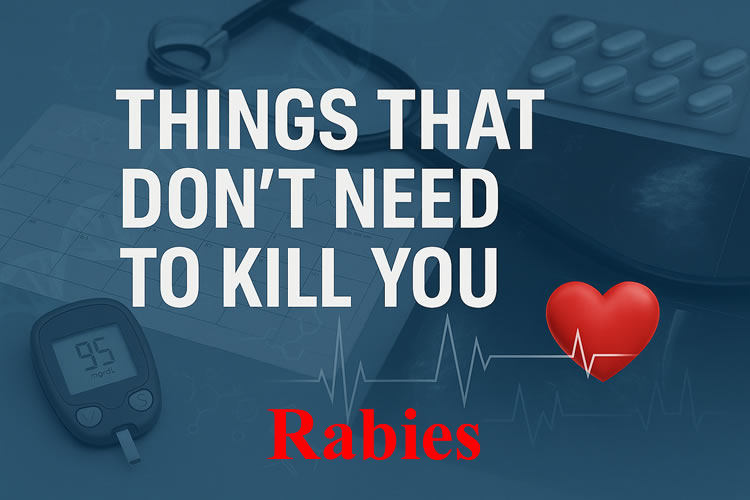It sounds impossible: a mother of three, scratched by a puppy while on holiday, later died from rabies. According to her family, the scratch didn’t even break the skin or draw blood. Yet a few months later, she was gone. The tragedy highlights how rabies — one of the oldest and most feared diseases known to man — remains deadly, and how even seemingly minor exposures can carry risk.
What Happened
The woman had been visiting Morocco, where rabies still circulates widely in dogs. She was scratched by a puppy during her stay, dismissed it as harmless, and carried on with her trip. Back home in Britain, she seemed fine. Then the first symptoms appeared: fever, confusion, difficulty swallowing, and agitation. Doctors quickly recognized rabies, but by that point, it was too late. Once symptoms begin, rabies is almost universally fatal.
Why a Scratch Matters
Rabies is not a blood-borne infection. The virus lives in the saliva and nervous tissue of infected animals. If a dog or puppy licks its paws, grooms itself, or mouths objects, its claws can carry infectious saliva. A scratch that creates even the tiniest opening in the skin — too small to notice or bleed — can allow the virus to enter.
This is rare, but it has been documented before, with cases linked to cat scratches, bat scratches, and even licks on broken skin. That is why public health authorities treat any bite or scratch from a potentially rabid animal as an exposure.

Rabies in the U.S. and Vermont
In the United States, decades of pet vaccination campaigns mean rabies is no longer common in cats and dogs. But the virus hasn’t gone away — it remains in wildlife reservoirs. Raccoons, skunks, foxes, and especially bats remain important carriers.
Vermont records rabies-positive animals every year, with raccoons and skunks leading the list. In 2025 alone, state health officials have already confirmed several cases. People are sometimes exposed without realizing it: a bat in a bedroom at night, for example, may scratch or nip without waking the sleeper.
For that reason, the Centers for Disease Control and Prevention (CDC) recommends medical evaluation after any possible rabies exposure from wildlife, even if there is no obvious bite wound.
🍁 Make a One-Time Contribution — Stand Up for Accountability in Vermont 🍁
How Rabies Works
Rabies does not cause immediate illness. The virus enters through a wound, then slowly travels along the nervous system toward the brain. This incubation period typically lasts one to three months, though it can be shorter or much longer. The location of the wound matters — scratches or bites near the face often progress faster than those on the arms or legs.
Once the virus reaches the brain, symptoms begin: confusion, hydrophobia (fear of water), muscle spasms, and eventually coma. Death usually follows within days. At this stage, treatment is almost always futile.
The Preventable Tragedy
The tragedy of rabies is that it is both deadly and preventable. A vaccine and treatment protocol called post-exposure prophylaxis (PEP) is highly effective if started soon after exposure. PEP typically includes immediate wound cleaning, a series of rabies vaccine shots over several weeks, and in severe cases, rabies immunoglobulin. When given promptly, this regimen prevents the virus from ever taking hold.
But in this case, as in many others worldwide, the woman did not seek treatment because the scratch seemed too trivial. That single missed step proved fatal.
Lessons Learned
This heartbreaking case underscores a message public health experts have repeated for decades: rabies does not forgive delay.
- Scratches, not just bites, can transmit the virus.
- Symptoms may not appear for weeks, but once they do, it is too late.
- Immediate treatment saves lives nearly every time.
- In Vermont and across the U.S., wildlife — not pets — is the main source of rabies exposure.
For families traveling abroad or living here at home, awareness and quick action are the difference between life and death.
Dave Soulia | FYIVT
You can find FYIVT on YouTube | X(Twitter) | Facebook | Parler (@fyivt) | Gab | Instagram
#fyivt #publichealth #rabies #vermont
Support Us for as Little as $5 – Get In The Fight!!
Make a Big Impact with $25/month—Become a Premium Supporter!
Join the Top Tier of Supporters with $50/month—Become a SUPER Supporter!









Leave a Reply